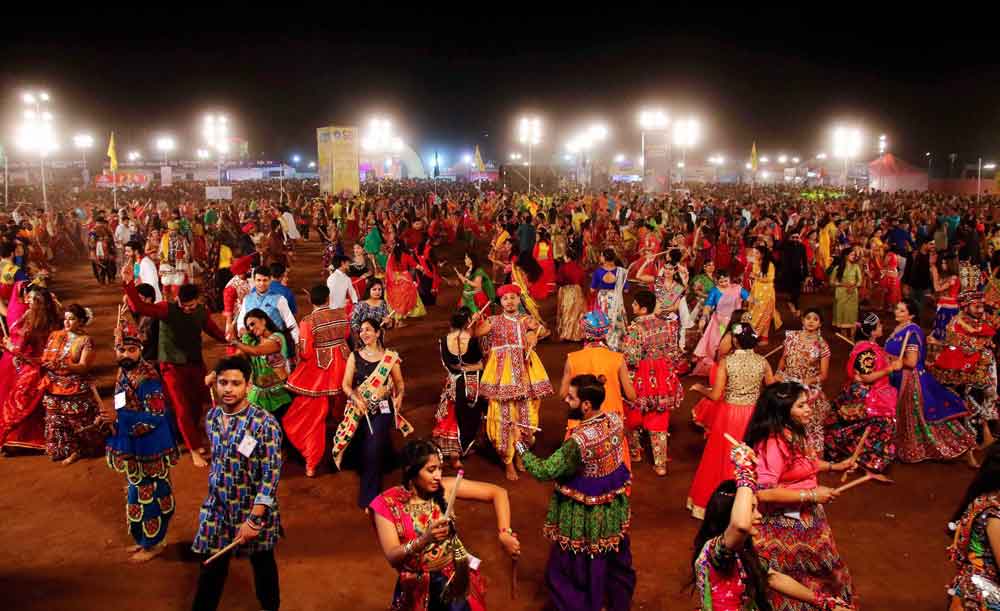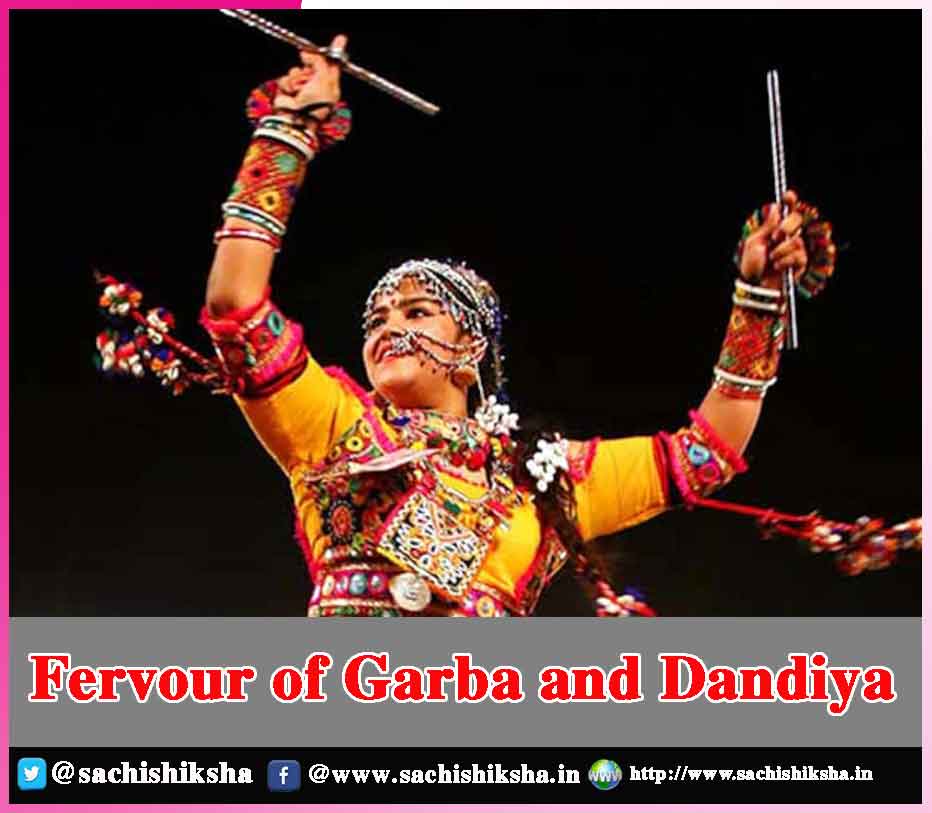Fervour of Garba and Dandiya
“Devi-Mahatmayam has special meaning for spirituality, With illumination, wisdom, strength -to freedom finally!”
~Munindra Misra
Also Read:
- Dus Hoke Bhi Hara – Defeat of the Evil: All You Should Know About Dussehra – History, Significance
- Deepawali-The Festival of Lights (Happy Deepawali)
- Diwali will Shine in this Quarantine: Make This The Best Ever Diwali
Table of Contents
Introduction to Navratri:
Navratri in Gujarat is a ticket to pure joy and enjoyment, with activities like Garba, Dandiya, diyas, and laughter. Navratri, or Nine Nights, is one of India’s most important festivals, and the zeal with which it is commemorated in Gujarat is unparalleled.
Navratri & the Gujrati People:
Gujarati people come together in many different ways during Navratri. Millions of colorfully attired devotees congregate to pay homage to Mata Ambe, a manifestation of Goddess Adhya Shakti, and take part in the famous Raas Garba dance. Every evening, aarti is done in front of the Goddess using a traditional clay pot called a garbi and diyas. Following the puja, people dance. Raas Garba, which is occasionally followed by dandiya, is the Navratri dancing form.
Raas Garba:
Raas Garba motions are a rhythmic and graceful dance performed in a circular pattern with highly synchronized gestures, backed by both live acoustic setups and amplified music systems. Every street, commonly referred to as a “gully nukkad” has a stage. Throughout the night, a variety of cultural programs are held. The holiday of Navratri has a long history and is linked to numerous myths.
Mahishasur & Goddess Shakti:
According to legend, there was a demon named Mahishasur who received a blessing from Agni that no man or object with a male name would be able to defeat him. He subsequently set about tormenting both mortal and immortal beings after becoming stronger.
The gods therefore asked Shiva for assistance in killing him, and he suggested to call upon Goddess Shakti. As a result of their prayers, Goddess Shakti, also known as Adhya Shakti, was created as a result. She engaged in combat with Mahishasur, or Rakshasa, as he is known in this country, and on the tenth day beheaded him. Before dying, Mahishasur is said to have asked the Goddess for pardon. The tenth day is referred to as Vijayadashami and symbolizes the triumph of good over evil.
Vijayadashami:
Additionally, Vijayadashami is regarded as a lucky day to purchase a new car. As the last day of the Navratri celebrations approaches, people relax after a hectic week of festivities. They typically feast themselves on classic foods like jalebi and fafda.
My Navratri Celebration Memory:
Like most of the Gujaratis, I eagerly anticipate the event each year. I’ve seen Navratri celebrations evolve from childhood to motherhood. As a child, I spent hours building a sand idol called Malla Mata. Small household items, flowers, and a miniature waterfall that descended from the mound were some of the embellishments we used to add. We felt proud of ourselves for helping to build Malla Mata with the help of all the local kids. Every night before Garba, we conducted an aarti before Malla Mata, and the prashad was the most exciting part of the entire ceremony.

Navratri a Chance to Revive Our culture & Customs:
The chance to reengage with our culture and customs is provided by festivals. In today’s society, parents use Navratri celebrations as an occasion to include their kids in the fun. I’ve seen children practicing garba a month before the event. They are able to step away from technology and screens thanks to this. They also pick up different life lessons and talents.
Garba Dance & Women:
Garba dances honor womanhood, celebrate fertility, and pay homage to a variety of mother goddesses. The dances traditionally celebrated a girl’s first menstrual cycle and, later, her impending marriage in Gujarat. The annual nine-day Navratri event, which occurs in the Hindu month of Ashvina, also features garba dancing (September–October). Although men may perform on occasion, women are often the ones who do garba.
Dance Configuration:
The fundamental dance configuration is a counterclockwise circle; if space is limited or there are many participants, dancers construct concentric circles that move in opposite directions. In the end, the performers form a circle around a mother goddess figure, like Durga, or an emblem of her creative force, frequently a lit clay pot or a water filled vessel. Dancing begins slowly and gradually picks up its speed.
Increasing Popularity of Garba :
Beyond Gujarat, garba performances are now popular not just in many other regions of India but also among Hindu communities around the world. The Holi spring event features numerous dance performances. There has been a noticeable increase in garba competitions and university dance troupes, especially since the late 20th century. Garba-like folk dances are also performed in other regions of India, particularly in Tamil Nadu, in the South East and Rajasthan, Gujarat’s neighbor to the northeast.
Dandiya:
Dandiya has its roots in India and goes back to a time when dances called Garba were performed in homage to Goddess Durga. In India, it is believed that Dandiya portrays a mock fight between Durga and Mahishasur, with sticks of Dandiya representing Goddess Durga’s sword, and is done after the Garba. Dandiya is also connected to Lord Krishna’s Raas Lila and the Gopiyan women’s community. During Navratri, groups of men and women do a dance called a dandiya while dancing joyfully and wearing bright attire. It is gradually gaining popularity among Gujaratis all over the world.
Conclusion:
At a time when the world is in turmoil, such festivals revitalize us and bring us closer together as a community. I hope this year too, people enjoy this festival with joy, and the fervor of garba and dandiya remains forever ignited in people from all over the world.















































